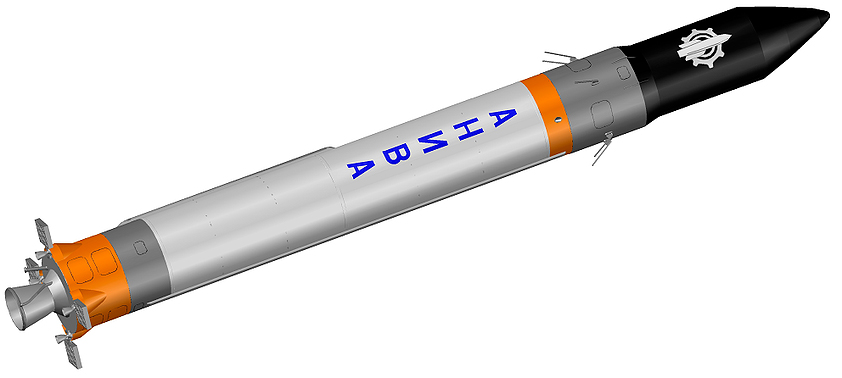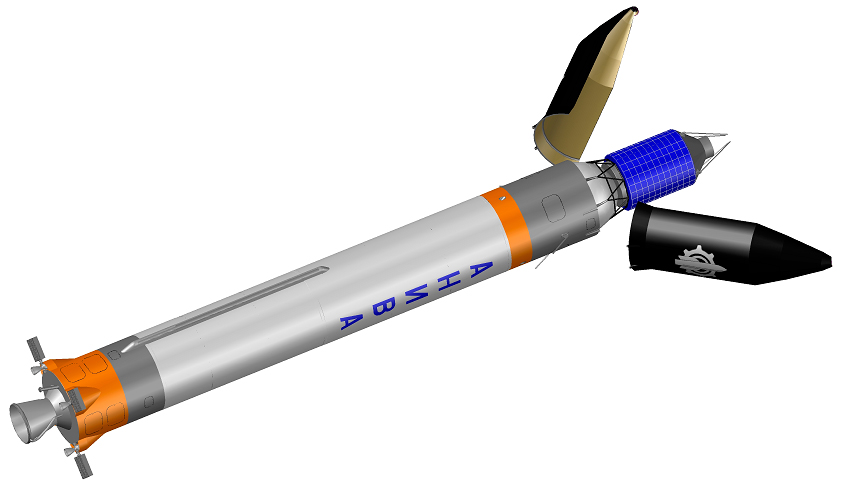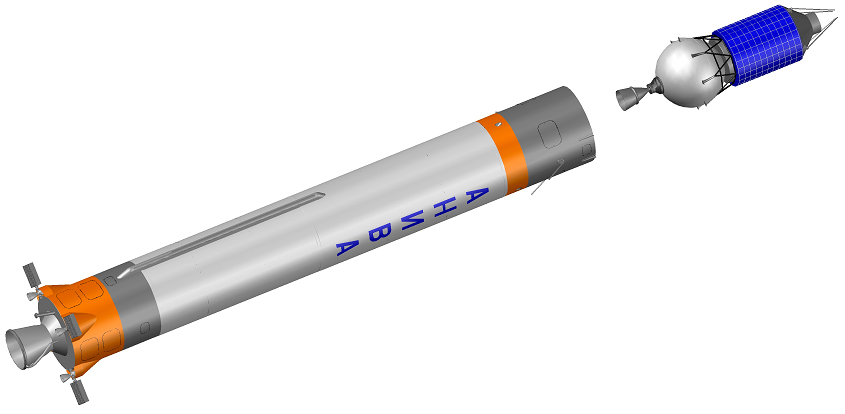Aniva microsat launch vehicle
Development of Aniva launch vehicle, which will have payload of 90 kg to LEO using liquefied natural gas (LNG) as a fuel, was started by Lin Industrial at the request of Isayev Chemical Engineering Design Bureau — the famous space company, whose propulsion units are installed on Soyuz spacecraft, International Space Station, and launch vehicles GSLV Mk I, Soyuz, Proton, as well as many other spacecraft and launch vehicles.

Why does the rocket need the same gas as a stove?

Many government space centers in Russia in 1990-s and 2000-ths were developing LNG-powered rocket engines and even rockets based on such engines.
LNG as a propellant has many advantages over both kerosene, which is now widely used, and liquid hydrogen, which is one of the most efficient fuels.
First, most modern launch vehicles use as an oxidizer liquid oxygen, boiling at -183 Celsius, that means cryogenics is used anyway in these launch vehicles, hence there will be no fundamental challenges in replacing kerosene tank with LNG tank at -160 Celsius.
Second, LNG while being inferior to liquid hydrogen in efficiency, is still superior to kerosene. Specific impulse (measure of the efficiency of rocket engine — the ratio of the thrust generated by the engine to the propellant flow rate) for liquid hydrogen + liquid oxygen bipropellant combination is 4462 m/s, for LNG + liquid oxygen — 3615 m/s, and for kerosene + liquid oxygen — 3510 m/s.
Third, LNG is 1.5–2 times cheaper than kerosene and much easier to obtain. The fact is that Russia is covered by an extensive network of natural gas pipelines. Branching a pipeline toward cosmodrome and building a small liquefaction facility is enough. An LNG plant is built on Sakhalin island in Russia, as well as two small-scale liquefaction plants in Saint-Petersburg. Five more plants are to be built at different locations in Russia.
At the same time the production of rocket-grade kerosene requires special grades of petroleum extracted from specific petroleum reservoirs, which are gradually exhausted in Russia. Not to mention liquid hydrogen, which was produced industrially by the republics of the USSR, while in modern Russia only small-scale production of liquid hydrogen survived.
And fourth, LNG engines are free of coking unlike kerosene ones, that is, simply put, free of stubborn soot. Hence, such engines are easier to use in reusable systems.
However, Roscosmos repeatedly rejects LNG launch vehicle projects developed by state enterprises, because in its view the transition of the national space industry from kerosene to LNG may take a lot of time.
In this situation, Isayev Chemical Engineering Design Bureau and Lin Industrial private company decided to join their forces and develop a cheap and marketable LNG launch vehicle.
Aniva design
The contribution of Isayev Chemical Engineering Design Bureau is S5.86.1000-0 liquid-fuel rocket engine. This powerplant provides 8.95 metric tons (87.8 kN) thrust at sea level and features five combustion chambers — one main chamber and four vernier thrusters. Its development was started in 1994, and on September 29, 2010 a successful test firing was held to confirm endurance. The engine worked at the test stand for 19.5 minutes.
Aniva is a two-stage vehicle. The first stage features S5.86.1000-0 engine with one main chamber and four vernier thrusters. The second stage features a liquid-fuel rocket engine consisting of one vernier thruster of S5.86.1000-0 with vacuum optimized (extended) nozzle. The second stage engine vacuum thrust is 500 kg (4.9 kN).
Aniva rocket engines
- First stage engine
- Type — S5.86.1000-0
- Number of chambers — 5 (including 4 vernier thrusters)
- Thrust at sea level/in vacuum, metric tons (kN) — 8.95 / 10.19 (87.8 / 99.9)
- Specific impulse at sea level/in vacuum, s — 290 / 330
- Second stage engine
- Type — engine based on vernier thruster of S5.86.1000-0, with vacuum optimized nozzle
- Number of chambers — 1
- Thrust in vacuum, metric tons (kN) — 0.5095 (5 kN)
- Specific impulse in vacuum, s — 350
The launch vehicle (gross mass is 7.3 metric tons, height — 11.06 m, diameter — 1.25 m) will have payload of about 90 kg to LEO.
The flight control of the first stage is performed by vernier thrusters, swiveling in a tangent plane to the rocket body, and by grid fins. Roll control of the second stage is performed by gas thrusters (the gas is taken after the turbopump), pitch and yaw control is performed by swiveling the chamber of the second stage engine. Stage separation is 'cold', that is the first stage is separated before the second stage engine ignites.
Aniva specifications
- Gross mass, kg — 7300
- Payload to LEO, kg — 89.9
- Mass of payload fairing, kg — 18
- Time before fairing separation, s — 190
- 1st stage
- Gross mass, kg — 5820
- Dry mass, kg — 759
- Thrust at sea level/in vacuum, metric tons (kN) - 8.95 / 10.18 (87.8 / 99.8)
- Burn time, s — 190
- 2nd stage
- Gross mass, kg — 500
- Dry mass, kg — 106
- Thrust in vacuum, metric tons — 0.51 (5 kN)
- Burn time, s — 345
Prospects
The current version of Aniva is a very first rough estimate made by Lin Industrial. In this article we provide only its conclusions, that generally demonstrate excellent specifications of the launch vehicle.
- use of composites in the design;
- increase of the first stage engine thrust;
- use of aluminium-lithium alloys for propellant tanks.
Besides, creation of a three-stage launch vehicle based on S5.86.1000-0 looks promising. For instance, a launch vehicle with four S5.86.1000-0 engines on the first stage, one S5.86.1000-0 engine with vacuum optimized nozzle on the second stage and one thruster-derived engine on the third stage is capable to launch 710-715 kg to LEO.
So, the launch vehicle named after the bay and the city on Sakhalin island, where the first Russian LNG plant is built, has big prospects of gradual development from microsat launch vehicle to small-lift launch vehicle, thus covering a considerable segment of the launch market.


Pictured above: Aniva launch vehicle delivering a microsatellite into orbit
